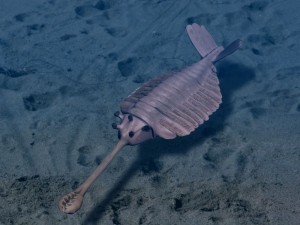 Biology is the study of life. The Greek βίος, bíos, stands for “life”; λόγος, lógos, means “leather”, among other things. In biology, therefore, one wants to study and understand the phenomenon of ‘life’ in a rational way. This can be descriptive (what species exist, how can we organize them, etc.) explanatory (detecting causes of certain phenomena), revealing certain laws so that the study can also be predictive and thus enable man to ‘manipulate’ life in the good sense of the word: cure diseases, fight pests, solving environmental problems, etc.
Biology is the study of life. The Greek βίος, bíos, stands for “life”; λόγος, lógos, means “leather”, among other things. In biology, therefore, one wants to study and understand the phenomenon of ‘life’ in a rational way. This can be descriptive (what species exist, how can we organize them, etc.) explanatory (detecting causes of certain phenomena), revealing certain laws so that the study can also be predictive and thus enable man to ‘manipulate’ life in the good sense of the word: cure diseases, fight pests, solving environmental problems, etc.
Life characteristics
It is difficult to give a conclusive definition of biological life. That is why it is often sufficient to list ‘life characteristics’, namely
- Breathing (or gas exchange)
- Reproduction
- (Proliferate-) Movement
- Metabolism
- Excretion
- Growth and Development
- Responding to stimuli
There are also five unifying principles that are considered the fundamental axioms of modern biology:
- Cells are the basic building blocks of life. Life shows organization and structure: there is a connection between form (anatomy, histology, morphology) and function (physiology, behavior).
- Genes are the fundamental unit of heredity. Reproduction is the process by which an organism provides offspring with wholly or partly similar characteristics and the survival of the species. Sexual reproduction often requires two individuals. The offspring have characteristics of both parents in new combinations.
- New species and hereditary traits are the product of evolution. Adaptations take place in structures or behavior, which make the organisms better able to survive or to care for offspring. This principle of adaptation to the environment is fundamental to the evolution of populations.
- An organism has the ability to keep the internal environment constant. Homeostasis is the ability of an organism to keep the internal environment constant.
- Organisms consume and transform energy. Metabolism is the absorption of substances and energy, the set of biochemical processes that take place in cells and organisms for the purpose of activity, growth, reproduction and maintenance. Energy is transformed from one form to another.
Organizational levels
In biology, we distinguish various levels of why life is organized
- the molecular level (molecular biology, think of DNA)
- the cellular level (the cell as the smallest unit of life, apart from the viruses that sit somewhat between molecules and cells)
- the level of tissues (histology)
- the organ level (a heart or lung specialist mainly works at that level, but higher plants also have ‘organs’, such as flowers)
- the level of the organ systems (digestive system, neural system, muscular system, etc.)
- the level of organisms (species, behavioral biology, etc.)
- the population level (herds, colonies, groups of individual organisms of the same species in a given area)
- the level of the ecosystem (the total coherence of organisms and populations in relation to the non-living environment such as climate, soil, etc.)
- the planetary level: astrobiology or the study of life on planets other than Earth. However, this branch of biology does not yet go beyond conjectures about water on other planets)
Fundamental and applied biology
One can distinguish between basic science and applied science
- Biology as a fundamental science merely seeks to know and understand life. One searches for new undiscovered species or wonders what causes certain phenomena, without caring what it would serve. Science for science’s sake, which does not exclude that the knowledge gained may one day be of great use to humans and an application indt.
- Applied biology starts from the problems where humans are more confronted, such as diseases, agricultural problems, control of nature. Science then tries to understand the problems and find the cause of them, and then apply them.
The division between fundamental and applied biology is not always clear: certain research is at the interface of the two.
Rich
- What lives like on earth? There are existing formats and we use the following:
- bacteria or prokaryotes (single-celled organisms without a real cell nucleus: the DNA is spread throughout the cell plasma
- eukaryotic unicellular organisms (protists: the DNA is located in a ‘real’ cell nucleus)
- fungi or fungi (multicellular eukaryotes that are close to the plants, but are unable to form sugars from light energy, photosynthesize them)
- plants (multicellular eukaryotes that can produce their own sugars through photosynthesis)
- animals (multicellular eukaryotes that have to absorb food and can move
Taxonomy
The word ‘taxonomy’ comes from the Greek: τάξις táxis ordering, settlement and νόμος nómos use, law) and stands for the science of classifying individuals or objects into groups (taxa, singular taxon). From ‘high’ to ‘low’ one distinguishes: Domain (Superregnum), Rich (Regnum), Department or Tribe, (Fylum, Divisio), Class (Classis), Order (Ordo), Family (Familia), Genus (Genus), Species, Subspecies (Subspecies), Variety (Varietas). Some groups still have a subgroup.
Relationship biology – theology (or faith, religion)



